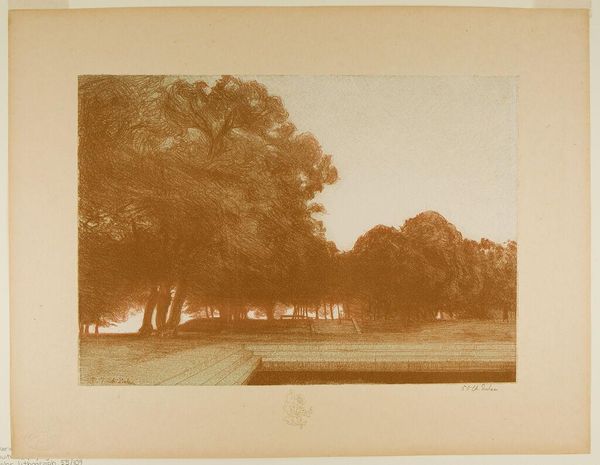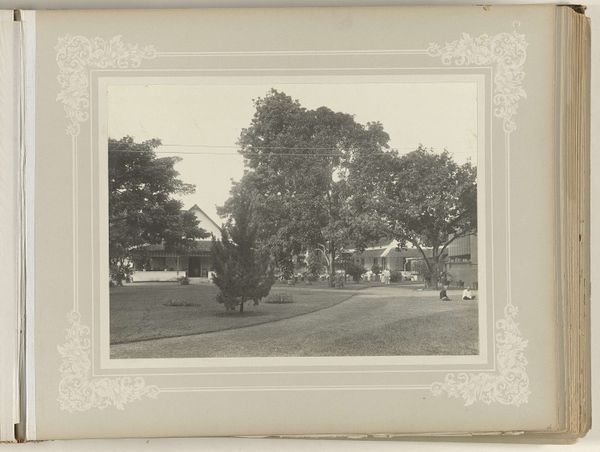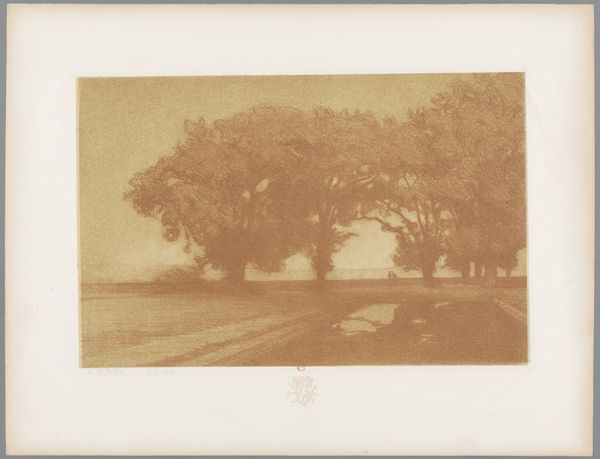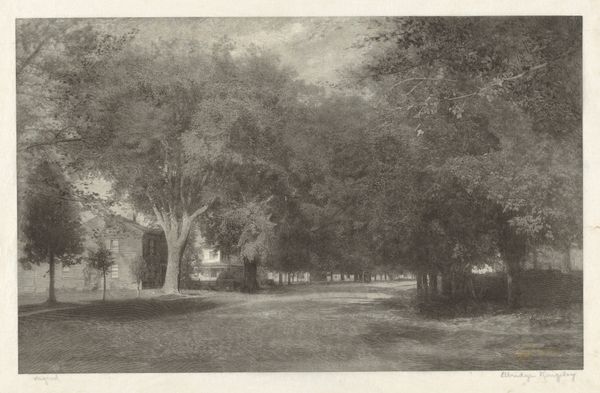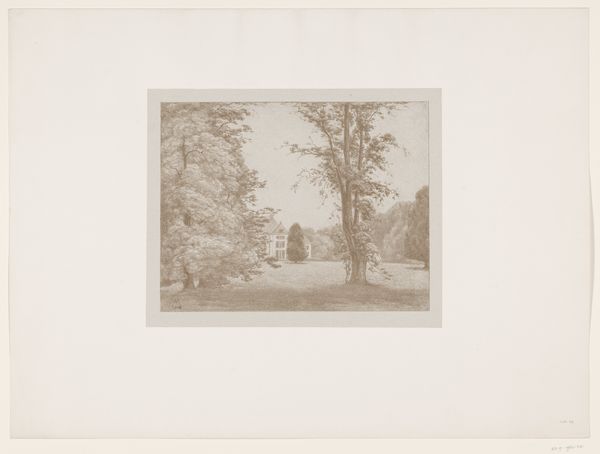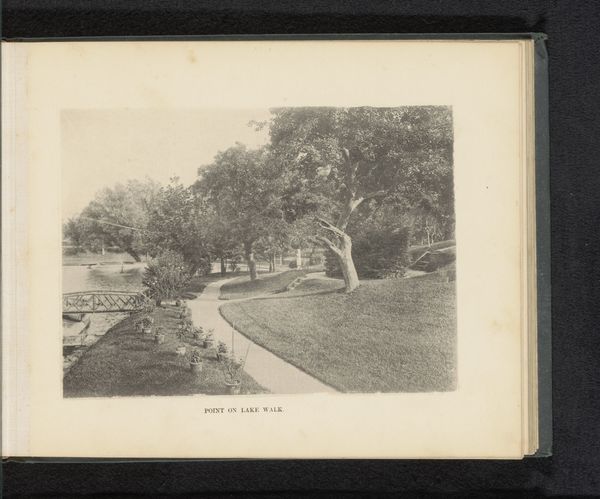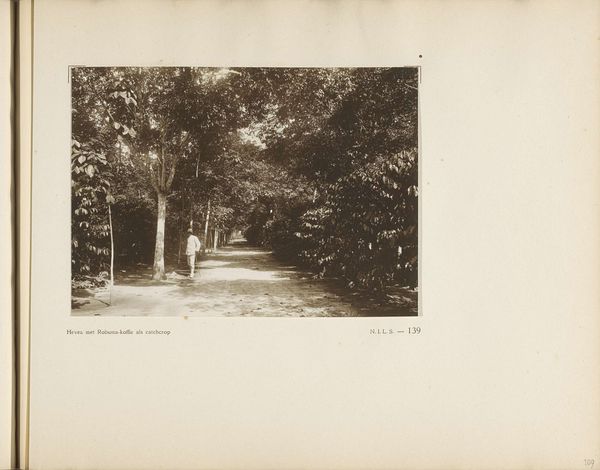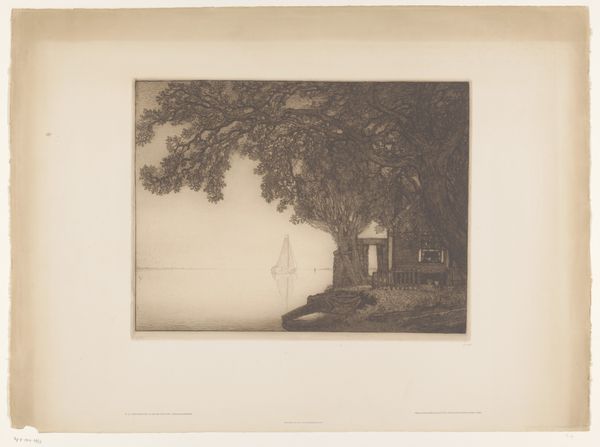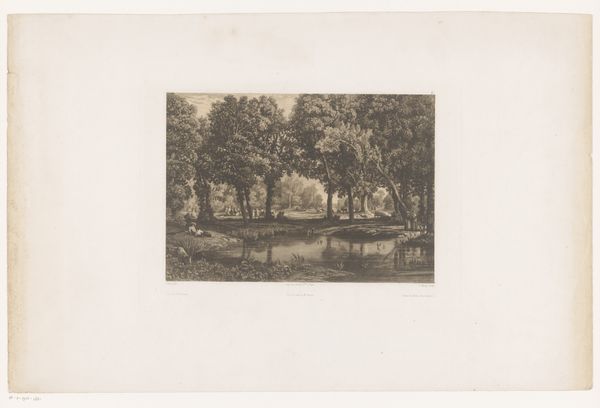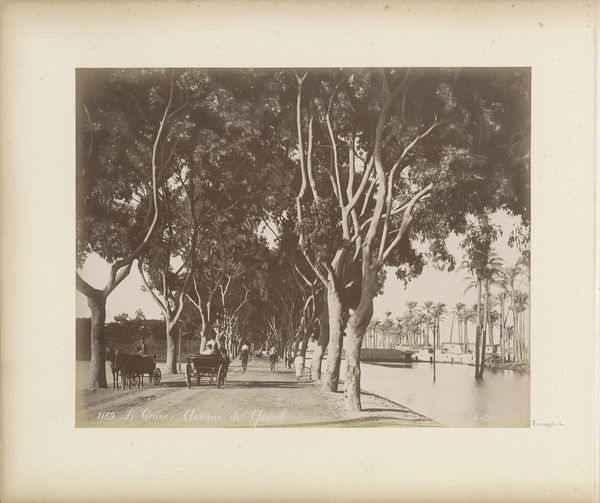
Dimensions: height 498 mm, width 648 mm
Copyright: Rijks Museum: Open Domain
Curator: Charles-Marie Dulac’s “Park met bomen, vijver en terras,” or “Park with Trees, Pond, and Terrace,” an etching made between 1892 and 1893. It’s an interesting piece in Dulac’s oeuvre, blending cityscape and landscape elements through the print medium. What's your initial take on it? Editor: Hauntingly peaceful. It feels like a memory fading at the edges, doesn't it? All these muted tones... You almost hear the rustle of leaves even though it's completely still. It's melancholic but somehow comforting. Curator: The etching technique really lends itself to that feeling. Consider how the linear process allowed him to build depth, using the careful application of acid to incise the image. It democratized the process and produced more accessible work for middle class consumption. Editor: That’s fascinating. It makes me wonder about his choices of imagery, focusing on the bourgeois landscape... this park, a shared space, rendered with this solitary, dreamy atmosphere. Was it commentary, celebration, or pure observation? Did his etching choices change or influence these places in real life somehow? Curator: That's a valid thought. Looking at the print process itself, etching allowed for reproducibility. Prints circulated, influencing tastes and documenting contemporary social spaces. What does that say about consumption, materiality, and representation, if we have the landscape filtered through the material reality of the etching process? Editor: It definitely deepens my impression of it. Thinking of it as a captured moment for popular consumption adds this layer of intentionality. Like a manufactured nostalgia or an aspirational lifestyle packaged as art. Still, I come back to that feeling, that echo of serenity—a place for reflection maybe? It definitely is something between an idyllic location and also some sort of product. Curator: So it captures not only the location itself, but the consumerist intention of having it? Food for thought! Thank you, I hadn’t seen it quite like that. Editor: And thanks to you too. Thinking about it, these print processes add an undeniable dimension to the work. I think it's interesting to go beyond just the immediate beauty of this image to also understanding it's historical and social placement.
Comments
No comments
Be the first to comment and join the conversation on the ultimate creative platform.
